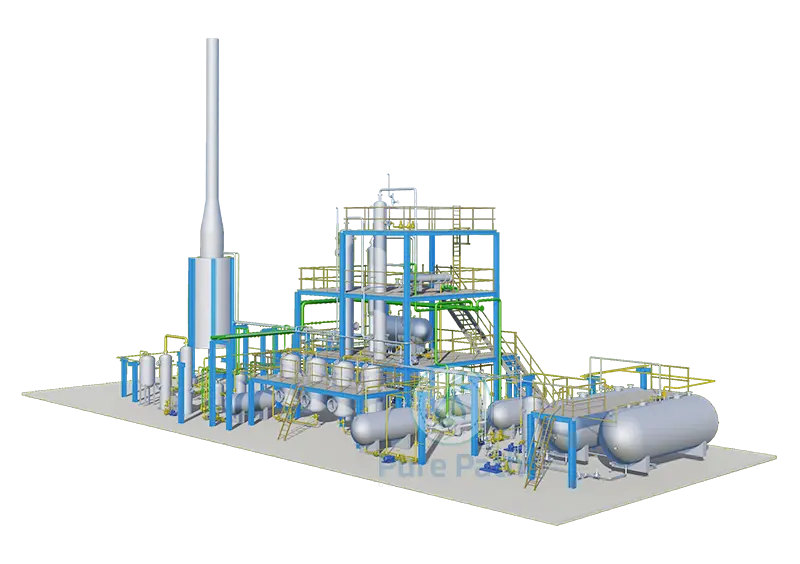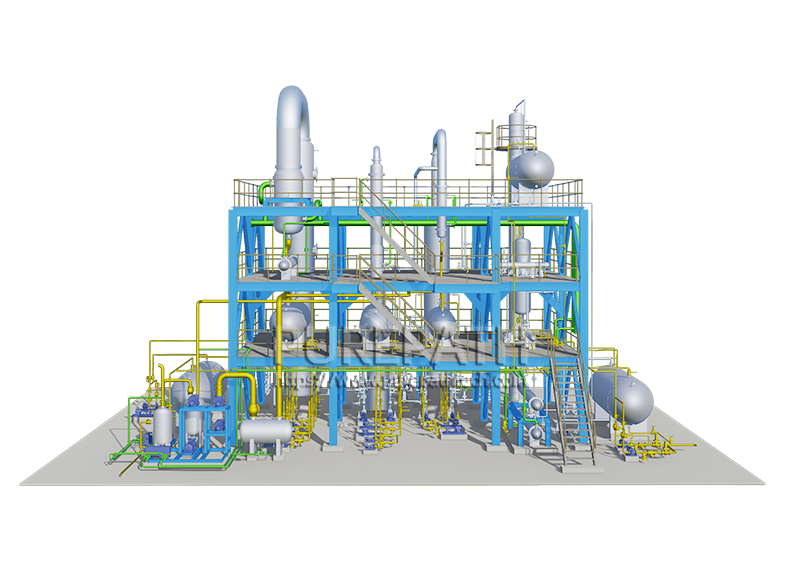How Can We Turn Plastic into Diesel Fuel?
According to the United Nations Environment Programme, more than 430 million tons of plastic are produced in the world annually, and less than 10% is recycled. Most of this waste goes into landfills or oceans, where decomposition takes several hundred years.
Most plastics, especially PP, PE, and PS, are petroleum-based materials that, even after their disposal, still contain high energy content. Instead of allowing these resources to build up as waste, modern conversion technology, for instance, plastic to diesel processing, enables us to turn non-recyclable plastics into usable fuel.
This transformation, besides mitigating landfill burden and marine pollution, further provides an alternative energy source for developing regions that have increasing demands for diesel.
Why Turn Plastic to Diesel Fuel?

While there is sufficient literature on the environmental impact of plastic waste, there is also a strong economic and energy rationale for the conversion of plastic into diesel. Plastics are made from long-chain hydrocarbons, which intrinsically have high chemical energy. This energy can be recovered using state-of-the-art technologies and transformed into diesel fuel, thus providing a renewable energy source from otherwise useless wastes.
1. High Energy Recovery Potential
It has been found from studies that plastic-to-diesel machines can convert 1 ton of mixed plastic into approximately 600 to 800 liters of diesel, depending on the type of material. Indeed, when processed efficiently, plastic is a surprisingly rich fuel source.
2. Reducing Dependence on Fossil Fuels
Communities and industries can reduce reliance on imported fossil fuels by making diesel from waste plastics. This option is of particular benefit to countries with fluctuating prices of diesel or where fuel supply is limited.
3. Resource Circularity
Turning plastic into diesel contributes to the circularity of the economy: waste is not just waste but enters the production cycle as an energy resource. This solution would not only save raw materials but also contribute to more sustainable industrial practices.
4. Environmental Compliance and Cost Savings
Municipalities struggle to balance the growing costs of waste disposal with the need to protect the environment. Investing in converting plastic waste into diesel alternatives can give businesses the opportunity to lower disposal costs, extract revenue from the diesel produced, and comply with regulations.
Hence, converting plastic into diesel fuel serves as an innovative solution to waste management and an energising strategy focused on cost saving and environmental stewardship.
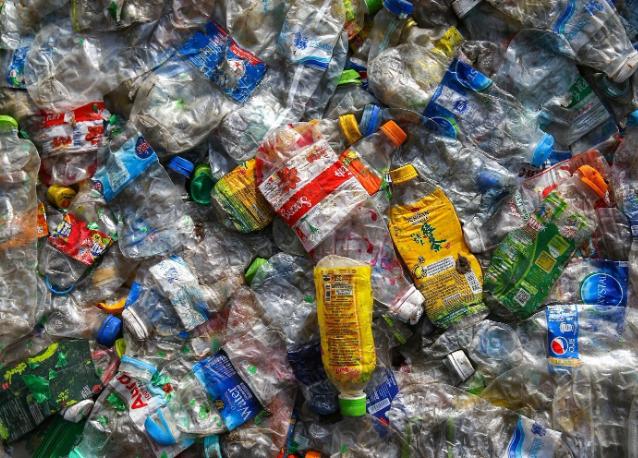
What Techniques are Used for Turning Plastic into Diesel?
Pyrolysis is the dominant and most technologically advanced method. It has to be realized that this is not incineration; it’s a precise molecular deconstruction.
Pyrolysis: The Science of Controlled Decomposition
At its core, pyrolysis is the process of thermal cracking in an oxygen-free environment. Burning plastic in the air produces heat and CO2; heating it outside of oxygen, as with our plastic-to-diesel machine, prevents combustion from taking place. Instead, the intense heat of our equipment generally operates between 350°C to 450°C-strategically breaks the long-chain polymer bonds within the plastic.
Think of a plastic polymer as an incredibly long, complex train. Incineration blows the whole train up. Pyrolysis, however, is like carefully uncoupling each car. These “cars”—the smaller hydrocarbon molecules—vaporize into a gas. This gas mixture is then the raw material for our new fuel.

Why Pyrolysis Outperforms Other Methods
Most of the earlier efforts at plastic-to-fuel conversion utilized simpler processes, but pyrolysis is unique in both efficiency and control. Among such advanced systems, the use of catalysts has been a key differentiator. We incorporate specific catalysts during the vapor phase to guide the molecular reassembly. This critical step does two things:
- It cracks heavier hydrocarbon chains more effectively, increasing the yield of desirable diesel-range fuels.
- It cleans the product by aiding in the removal of impurities and stabilizing the fuel, hence giving a clear, more stable, high-quality end product.
Now, turning plastic into diesel is not just possible on paper, but it is feasible to operate on a continuous commercial basis. The technology developed is particularly effective on polyolefins like Polyethylene (PE) and Polypropylene (PP) which are plentiful in the waste stream, possess a high latent energy value, and are ideal for converting plastic into diesel fuel. Looking at this as waste disposal is a mistake; this is a high-quality recycling operation.
Plastic to Diesel Machine Working Process
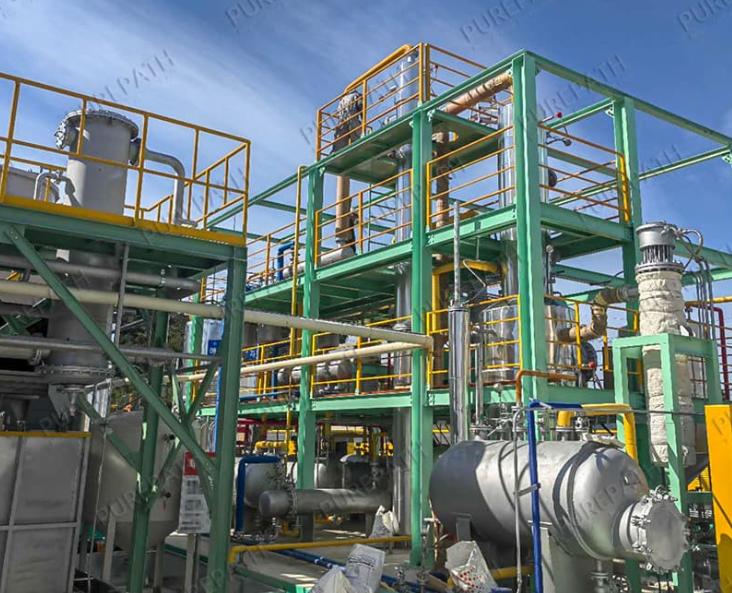
The operation of a plastic to diesel machine is done in such a manner that maximum recovery of fuel is achieved with minimal emission. Modern machines are highly automated, combining safety and efficiency with reliability. Here’s the working process:
Step 1 — Sorting and Preparation
Waste plastics, such as PP, PE, and PS, are sorted first to eliminate metals, glass, or other contaminants. They are shredded into smaller pieces to ensure uniform heating. Proper preparation improves both fuel yield and machine efficiency.
Step 2 — Feeding into the Reactor
The prepared plastic is fed into the sealed pyrolysis reactor. Advanced systems use automated feeders in order to sustain a continuous process and maintain consistent output.
Step 3 — Pyrolysis Conversion
Inside the reactor, plastics are heated up to about 350–450°C in an oxygen-free atmosphere. This high-temperature process breaks long-chain polymers down into shorter hydrocarbon molecules, forming pyrolysis oil and non-condensable gases.
Step 4 — Condensation of Oil Vapors
Pyrolysis also results in gases that are passed through a condenser system. During cooling, these vapors turn into liquid crude oil, which is collected for further refining. This is a very important step to generate quality fuels.
Step 5 — Refining into Diesel
Crude pyrolysis oil contains impurities and a mixture of hydrocarbon chains. The separation into diesel and other by-products would take place through distillation or in an added refining process. This results in diesel, which is within engine specifications or for industrial use.
Step 6 – Energy Efficiency and Gas Recycling
Non-condensable gases generated during pyrolysis are reused for heating the reactor, thus minimising the need for external energy, which improves the overall efficiency of converting plastic to diesel fuel.
Step 7 – Managing Solid Residues
Residual carbon or char collected from the bottom of the reactor has industrial uses and helps reduce waste and generate additional revenue.
This sequence allows a plastic to diesel machine to convert non-recyclable plastic waste into diesel fuel safely, sustainably, and with great efficiency.
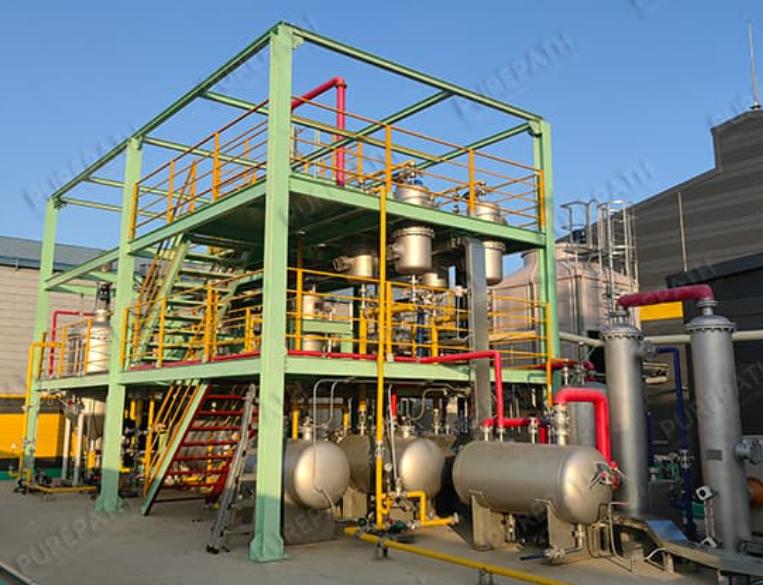
Need to Turn Your Waste Plastic into Diesel Fuel?
If you deal with large quantities of plastic waste, the question is not how to get rid of it but how to unlock its hidden value. Invest in a plastic-to-diesel machine, which means transforming your strategy from mere waste management to resource recovery.
The operational and economic case is clear. This technology offers a direct solution for converting a recurring disposal cost into a continuous source of fuel and revenue. The resulting diesel can be used on-site to power equipment and vehicles, reducing operational energy costs, or it can be sold as a commercial product.
When assessing a plastic to diesel system, place most emphasis on engineering capability and long-term support by the manufacturer. Among the most important factors:
- System Robustness: Plant and machinery designed for nonstop industrial operation.
- Process Efficiency: Technology designed to maximize diesel yield from your particular stream of plastic waste.
- Operational Safety: Integrated safety protocols and system controls.
- Technical Support: Access to reliable installation, training, and maintenance services.
Our systems are engineered to meet these criteria. We provide the technology and partnership required to implement a viable turning plastic into diesel fuel operation.
Contact us to receive a technical overview and discuss how our systems can be integrated into your operations.



